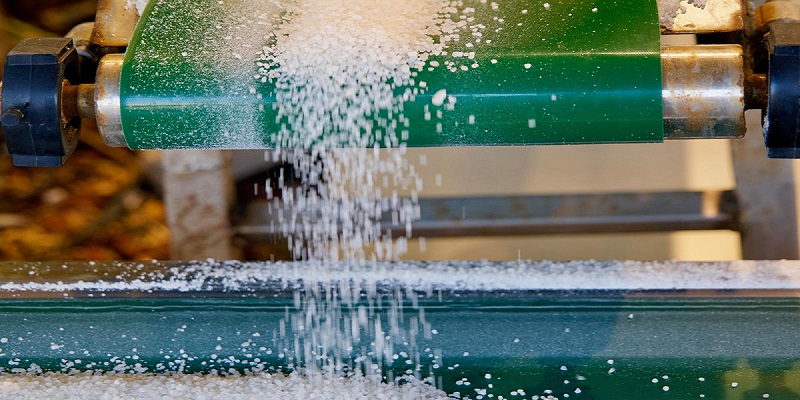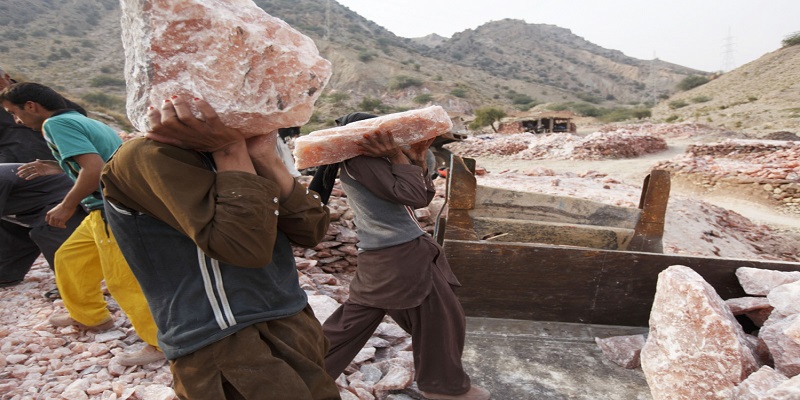From Mine to Ocean: Exploring the Distinctive Qualities of Himalayan salt and Sea Salt
Our lives depend heavily on salt, particularly when seasoning our food. However, choosing the appropriate type can be challenging, given the many possibilities available. Himalayan salt and sea salt are two of the most well-liked competitors that frequently cause discussion.
This blog will examine Himalayan and sea salt’s unique characteristics and benefits. We’ll explain their differences so you can decide which option is better regarding flavor, advantages, composition, features, and more. Let’s explore it and learn more about Himalayan and sea salt differences.
Does Himalayan salt taste different from regular sea salt? Absolutely! These two salts differ in several ways, including extraction method, color, texture, mineral content, and—most significantly—flavor. Both Himalayan and sea salt have distinctive flavors from table salt because of their unusual mineral concentrations. There are other, less apparent characteristics between the two, notwithstanding the slight difference in saltiness.
Sea salt and Himalayan salt have different properties.
-
Origin and Availability of Himalayan Pink Salt
Khewra, a district in Pakistan’s Punjab province, is the source of Himalayan Pink Salt. This rare salt is widely available from the salt ranges of Khewra. The rich mineral makeup of Himalayan salt, notably its iron content. It also includes several other crucial components.
Sea salt, on the other hand, has a unique origin. The process of evaporating seawater yields sea salt. The residue left behind as the water evaporates is what we know as sea salt. This procedure occurs in coastal places worldwide, allowing sea salt from different regions to be produced. Due to its saltwater origin, sea salt contains minerals and trace elements.
-
The Process of Sea Salt Production

Sea salt and Himalayan salt are extracted in distinct ways to represent their geographical origins. Using age-old, customary methods, Himalayan salt is removed from the Pakistan Salt Range mountains. The salt is manually mined by skilled personnel, keeping its original characteristics. Long ago, these salt deposits were created when the old seas dried up and left behind rich mineral treasures. The salt is carefully extracted during mining to preserve its distinctive composition and trace minerals
Sea salt, on the other hand, is produced by collecting and evaporating seawater. To create salt crystals, coastal seawater is collected and disappears spontaneously. The residual salt is extracted once the water has evaporated. This technique captures the sea’s essence, giving sea salt distinctive flavor and qualities.
Himalayan salt and sea salt are different from one another in the ways that they are extracted. While the evaporation of seawater creates sea salt, Himalayan salt is produced using conventional mining methods. These procedures highlight the salts’ natural origins and heighten their distinctive appeal.
-
Distinctive Appearance of Himalayan Salt

Himalayan pink salt can be found in various colors, from pink to pale orange. Giant blocks and chunks of it are brought, and as needed, they are cut and ground. Himalayan salt is unprocessed and unrefined, which gives it a gritty texture. Additionally, several trace minerals may provide it with a drab appearance.
Sea salt, on the other hand, is strikingly pure white. Although it has a somewhat rougher texture than refined table salt, it can be used regularly to enhance flavors in food.
-
Mineral-Rich Composition of Himalayan Salt
The purest salt is typically thought to be Himalayan Pink salt. Consumers are exposed to it in its natural state. Himalayan salt and sodium chloride have 84 trace minerals that are very good for human health. A combination of these minerals produces the stunning colors of Himalayan salt. The iodine, magnesium, potassium, and calcium in Himalayan salt increase its nutritional value.
However, seawater evaporates to produce sea salt. Seawater may also contain several different compounds in addition to salt. An excellent example is the numerous types of algae. Another problem is that the methods used to extract sea salt pollute the salt as they are being used.
-
Tastes of Himalayan Salt and Sea Salt
Due to variations in their sources and mineral compositions, Himalayan and sea salt may taste slightly different. Due to pollutants like microplastics and algae in the water where sea salt is produced, it occasionally tastes all its own.
On the other hand, Himalayan salt also includes a minor amount of sodium chloride and trace minerals. Due to this unusual mineral composition, some people could find a milder or less pronounced saltiness, which is less thrilling in flavor. Iodine is not found naturally in Himalayan or sea salt in unprocessed forms; it is vital to remember this.
However, it’s important to note that iodine is frequently added during the refining process to processed salts, including both Himalayan salt and sea salt varieties. This supplement guarantees an appropriate intake of this crucial mineral while addressing iodine deficits in the diet.
The Best Substitute Is Himalayan Salt
Himalayan salt is used in the kitchen to improve flavor while also supplying necessary trace minerals. Himalayan pink salt, which has a characteristic texture and crystalline structure, is used in various goods for various purposes. In regular culinary practices, it can be utilized as a superior replacement for both Himalayan Salt and Sea Salt. In addition, pink salt outperforms sea salt as a garnish since it enhances food flavors, adds a lovely garnish, and provides a pleasant, crisp texture.
Conclusion
Because sea salt and Himalayan salt are abundant in essential minerals, people frequently struggle to decide which to use. Nevertheless, it is necessary to note that Himalayan salt is the preferred option above table salt. Its ingestion helps keep the body in good shape. While both salts are naturally derived and untreated, their extraction techniques are different.
Himalayan salt stands out as a potent supplement to correct mineral deficiencies since it is rich in minerals like potassium, calcium, magnesium, and iron. Please get in touch with Standard Salts if you’re thinking about buying the best salt for your diet.